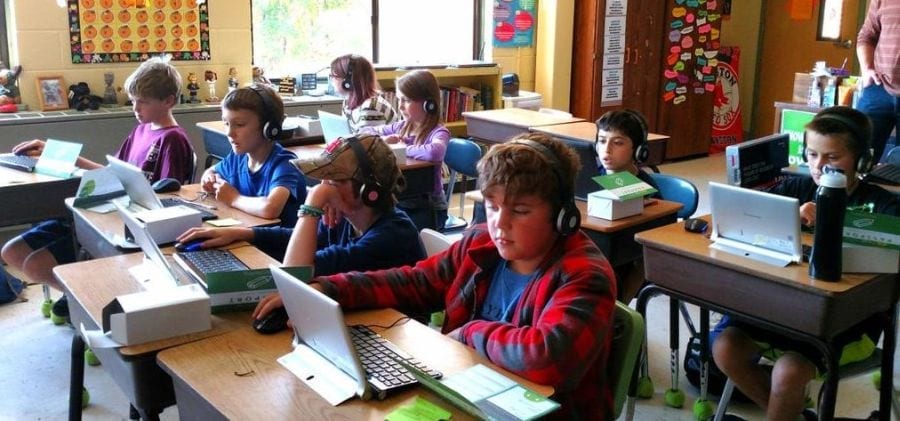Michael Ronan is a Senior Healthcare Executive at Lenovo. But he’s far more than that to the kids in a small town in New Hampshire, where his daughters inspired him to create an after-school STEM (science, technology, engineering & math) program. We caught up with him recently as he enjoyed a rare moment of pause.
Hi, Michael. Tell us about the origin of this after-school STEM program you created.
As a technologist at heart and as a Lenovo field rep, my daughters (7 and 9) are surrounded by technology. As you can imagine, my house is filled with virtually every type of Lenovo computer there is. My oldest daughter Charlotte loves technology as much as I do.
I’m right there with you. My kids are total gadget hounds.
What I have found is that, despite being surrounded by technology, my daughter—along with most “Internet Of Things” kids—is really great at consuming and not so good at creating. Born was the idea of taking it a step forward to teach her how to “use” a computer for its intended purpose: as a tool to solve.


So this desire to help your daughter “solve” is where your journey began?
Yes. It got me thinking: how can I solve what I see as a growing problem? Countless studies about STEM validate that our kids are not learning how to use technology until too late. In New Hampshire where I live, the governor formed a STEM task force last year and the findings were astonishing.
Astonishing in what way?
Despite our proximity to Boston (1 hour away) with some of the best colleges and universities (MIT, Harvard) and one of the largest tech hubs in the country, New Hampshire ranks 32nd in the number of bachelor degree graduates in STEM. On top of my state’s rankings, we all know the US as a whole is facing a similar situation, with 29 other countries ranking ahead of us in Math and Science. Throw in the gender gap between male and female and, as a dad of 2 daughters, I get really concerned. And this comes from a guy whose mother was a computer programmer and trailblazer back in the field back in the 1980s and ‘90s. The disparity is growing.
That’s really cool about your mother. So where did your idea go from there? To be honest, most of us would have thrown up our hands in frustration and moved on.
My initial idea of helping my daughters learn technology quickly spiraled into trying to figure out how to help a larger population. We live in a small town (population 5300) with an amazing school. Many of us choose to live here despite being able to live virtually anywhere else in the region or even country. We like the idea of a small town, we love that our town has no focus on socio-economic rankings. (Keeping up with the Joneses does not apply here). Many of the parents are in engineering or STEM-related fields. It only seemed right to start a Computer Science Club for elementary aged students where they could be exposed to programming.

That makes good sense.
So in early 2015, I submitted a grant to the Lenovo Doers for Youth to start an afterschool STEM program. I was awarded 10 Yoga Tablets to get it started. As a field rep for Lenovo for the last 8 years, I have carved out Mondays as my typical home office day. Rather than taking an hour lunch break, I figured I would just take one hour a week and volunteer my time afterschool to start this program. As you can imagine, moving from an idea to reality takes some work. Luckily I was able to find a predefined club through Google’s CS First program. Last Monday I hosted my first club with 12 kids from 4th – 6th grade. The feedback from the parents and students was incredible. For the next 7 weeks I will be doing the same.

That is an inspiring story and I admire your tenacity for taking it this far. What plans do you have beyond these next 7 weeks?
A group of 12 kids is a good start but surely not enough to make a huge impact. My goal over this next year is to grow this program, to get computer programming into my school district curriculum and into the state’s curriculum. It’s not ok to expect our teachers to take this on themselves. Regardless of where you live, our country needs parents to help shrink the growing STEM gap. I realize not everyone has the means to do this but with companies like Lenovo who are willing to donate resources, it can be done.
If you’d like to reach out to Michael to learn more (or ask his advice on starting a STEM program in your community), tweet @LenovRonan. To learn more about Michael’s day job at Lenovo Health, go here.
Gavin O’Hara is Lenovo’s Brand Newsroom Lead.
